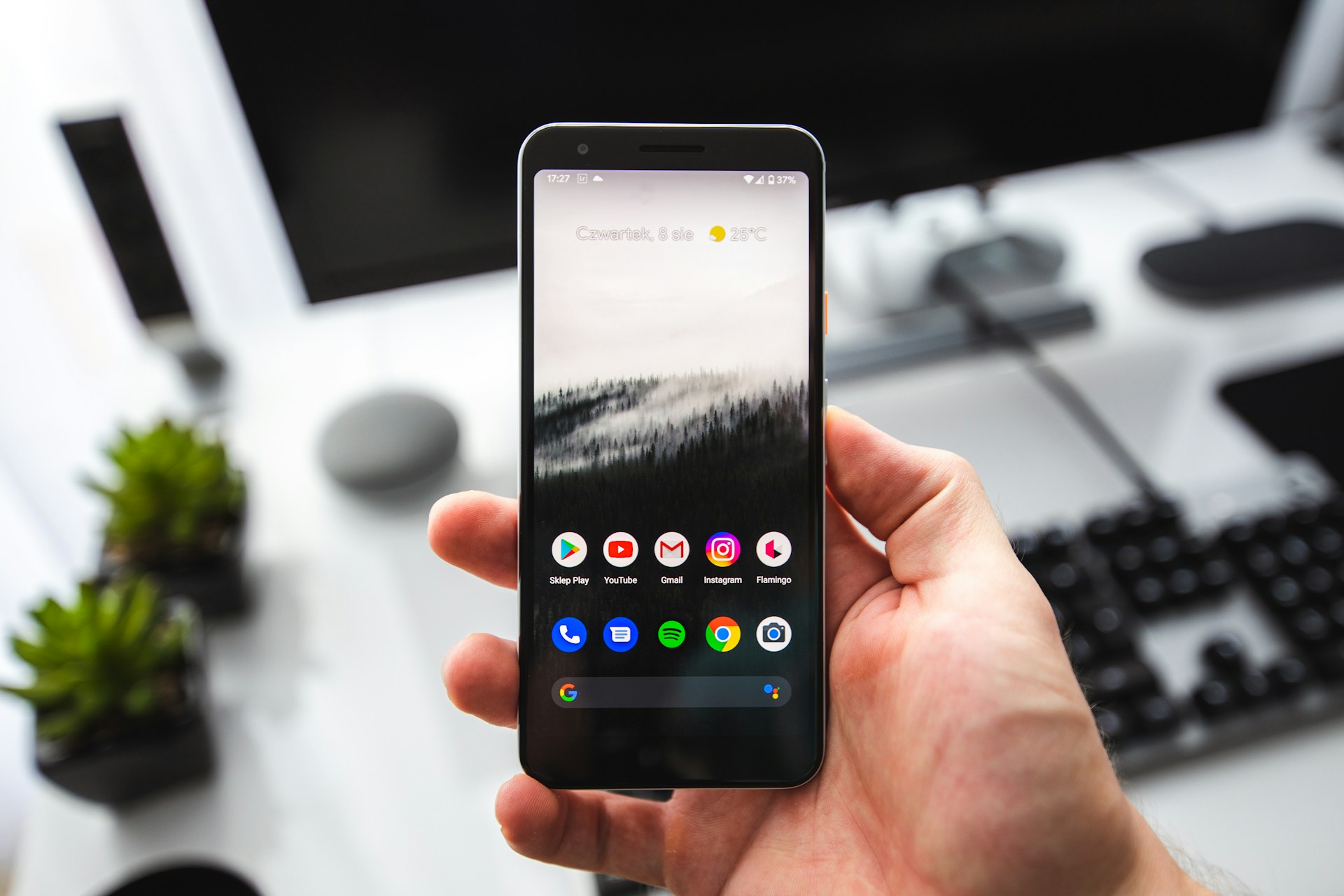Enabling Developer Options on your Android device allows you to unlock a hidden treasure trove of advanced settings and customization options. To get started, navigate to the “Settings” menu on your device. Depending on your Android version, you may need to scroll down or swipe left to find “About phone” or “About device“. Tap on this option, and then look for “Software information” or “Software“. Once found, tap on it to reveal further system details.
Here, you will notice a section labeled “Build number” or “Build version“. Tap on this option repeatedly, about seven times, until you see a message indicating that you are now a developer. Congratulations! You have successfully unlocked the Developer Options on your Android device. To access these options, go back to the main “Settings” menu and you should now see a new “Developer options” menu. Tap on it to dive into a world of possibilities and unleash the full potential of your Android device.
Finding the Hidden Developer Options in Android Devices: Unveiling the Power of Customization
Once you have familiarized yourself with the basic functionalities of your Android device, it’s time to take your experience to the next level by exploring the hidden developer options. These options allow you to unlock a world of customization and optimization settings, empowering you to tailor your device to your unique preferences. With the ability to tweak various system settings and unleash hidden features, the developer options offer a playground for tech-savvy individuals looking to maximize their Android experience.
Finding the developer options on your Android device may seem like a daunting task at first, as they are usually hidden away to prevent accidental access. However, with a few simple steps, you can unveil this secret menu and unleash its power. The process may vary slightly depending on the make and model of your device, but the general method involves accessing the device settings, tapping on the “About Phone” or “About Device” section, and then locating the build number. Tapping on the build number repeatedly, typically around seven times, will activate the developer options, revealing a vast array of customization and optimization settings that were previously hidden from view.
Accessing Advanced Android Settings for Developers
Unlocking the full potential of an Android device often requires accessing the hidden treasure trove of advanced settings known as the Developer Options. This secret menu offers a plethora of customization and debugging tools specifically designed for developers, but its power can be harnessed by any user looking to enhance their Android experience.
To access the Developer Options on your Android device, follow these simple steps. First, navigate to the “Settings” app on your device. Then, scroll down and tap on the “About phone” or “About device” option. Within this menu, you should see a section called “Build number” or something similar. Tap on this build number repeatedly, approximately seven times, until a message pops up confirming that you are now a developer. Congratulations! You have successfully revealed the secret menu and unlocked a world of advanced settings at your fingertips.
Discovering the Untapped Potential: Locating the Developer Options on Your Android Device
Many Android users are unaware of the hidden gem that lies within their devices – the Developer Options. By uncovering this secret menu, users can access a whole new level of customization and advanced settings. However, locating the Developer Options may not be as straightforward as one might think. In order to tap into the untapped potential of their Android devices, users must navigate through a series of steps to enable this hidden feature.
First, users need to head to the Settings menu on their Android device. From here, they need to scroll down and locate the About phone or About device option. Once they have found it, they should tap on it to reveal a slew of information regarding their device. Next, users need to look for the Build number or Build version option. This is where things get a bit tricky – the Build number may be listed under different sub-menus depending on the Android device. Nonetheless, users should tap on the Build number repeatedly until a message pops up, indicating that they are now a developer. At this point, the Developer Options should become visible within the main Settings menu, offering users a world of customization and advanced settings to explore.
Unleashing the Hidden Features: Navigating to the Developer Options in Android
Navigating to the Developer Options in Android allows users to unleash a whole new world of hidden features and customization options. To start, locate the Settings app on your Android device. This can typically be found in the app drawer or by swiping down from the top of the screen and selecting the gear icon.
Once in the Settings menu, scroll down until you find the “About phone” or “About device” option. Tap on it to access more detailed information about your device. Look for the “Build number” or “Software information” section, which may be located at the bottom or under a sub-menu. It is important to note that the exact location of these options may vary depending on the manufacturer and version of Android.
Now comes the exciting part – to unlock the Developer Options, tap on the “Build number” or “Software information” section repeatedly, at least seven times. You will see a countdown message indicating your progress, and after the seventh tap, a pop-up message will inform you that you are now a developer. Congratulations! The Developer Options can now be found in the main Settings menu, usually listed towards the bottom.
Exploring the Developer Options in Android Devices
The Developer Options in Android devices offer users the ability to delve deeper into the inner workings of their devices. By exploring this toolbox, users can unlock a range of hidden features and settings that are not readily available in the standard settings menu. From tweaking animations and transitions to enabling USB debugging and accessing advanced networking options, the Developer Options provide a wealth of customization and control.
One of the key features within the Developer Options is the ability to enable USB debugging. This feature allows users to establish a direct connection between their Android device and a computer, making it possible to run debugging tools, install custom firmware, and test applications directly from a PC. By enabling USB debugging, users can gain greater control over their device’s functionality and performance, making it an essential tool for developers and tech-savvy individuals alike. However, it is important to note that enabling USB debugging should be done with caution as it grants elevated privileges and can pose risks if not used responsibly.
Understanding the Developer Options in Android
Understanding the Developer Options in Android is crucial for those who seek the utmost customization of their devices. By accessing these hidden settings, users gain the ability to personalize their Android experience to a level not previously possible. The Developer Options offer a range of features that grant users complete control over their device’s performance, appearance, and behavior.
One of the key features found in the Developer Options is the ability to adjust the device’s animation scale. By default, Android includes various animation effects when transitioning between apps, opening menus, or swiping through screens. However, some users may find these animations to be slow or unnecessary, causing a delay in their overall Android experience. With the Developer Options, users can manipulate the animation scales to their liking, speeding up or disabling these effects altogether. This allows for a smoother, more responsive user interface, providing a personalized touch to the Android device.
Journey into the Developer’s Realm: Accessing and Utilizing Android’s Developer Options
When it comes to exploring the hidden depths of your Android device, accessing the Developer Options is like stepping into a whole new realm. These hidden settings unleash a world of customization and advanced features that allow you to take complete control of your device. But how do you access these enigmatic options?
To embark on this journey, you first need to locate the Developer Options on your Android device. Although not readily visible, they can be easily accessed by following a few simple steps. Once you have activated the Developer Options, you will be greeted with a plethora of settings that can be customized to optimize your Android experience. From tweaking animation settings to enabling USB debugging, the possibilities are endless. The Developer Options are a treasure trove of hidden superpowers waiting to be unleashed, enabling you to master your Android device like never before.
Maximizing Your Android Device with Developer Options
With the ever increasing popularity of Android devices, it is important for users to explore the hidden features and maximize the potential of their smartphones. One way to unlock these hidden superpowers is by accessing the Developer Options, a secret menu that provides advanced customization settings. By delving into the Developer Options, users can enhance their Android experience and take control of their devices in ways they never imagined.
Located deep within the settings of an Android device, the Developer Options menu offers a plethora of options that can be customized to suit individual preferences. From enabling USB debugging to tweaking animation settings, this hidden gem grants users the ability to fine-tune their devices and optimize performance. Furthermore, the Developer Options provide insights and tools that are invaluable for app developers, allowing them to test and debug their creations with ease. Overall, by unmasking these hidden superpowers, Android users can unlock a whole new level of customization and unleash the full potential of their devices.




Leave a Reply